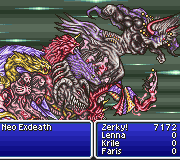|
Hire Sparky Battle pods -> Spaceports Research
|
|
|
|

|
| # ? May 7, 2024 20:51 |
|
my dad posted:Hire Sparky Nothing wrong here.
|
|
|
|
Whoo! Great posts on establishing the narrative. Sparky, Spaceports via Battle Pods, Research. Sparky's tech provides automated repair unit, which allows ships to automatically regenerate health in combat and fully repair after battle. Super important early game o maintaining survivability. Spaceports gives more money (boosting the income of your planet by 50% is huge). Battle Pods are pretty much a MUST for the tech tree in warships given they give you twice the amount of space to work with. By the time you hit Mega Fluxers you can nearly double the internals in a ship with the two combined. Research as.. Gets us more toys to play with adn generally build up infrastructure, which in turn lets us make more toys to play with.
|
|
|
|
my dad posted:Hire Sparky This, but I will add on Head over to Tritanium armor afterwards - do not continue on the Spaceports line to robo miner plant. We should have a way of dumping pollution more efficiently before we start generating enormous automated industries.
|
|
|
|
I mean, it's possible to just treat it as an indirect science boost. Keep the amount of production similar to what you had before, but move the extra pops to science. As important as that first pollution control tech is, it's expensive.
|
|
|
|
wedgekree posted:Sparky's tech provides automated repair unit, which allows ships to automatically regenerate health in combat and fully repair after battle. Super important early game o maintaining survivability. It's actually Advanced Damage Control. It doesn't provide in-battle repairs (although the engineer leader does if assigned to a fleet), but automatically fully repairs after battle without need for any local facilities for service. It is indeed great for keeping fleet endurance up. nweismuller fucked around with this message at 08:31 on Oct 2, 2016 |
|
|
|
nweismuller posted:It's actually Advanced Damage Control. It doesn't provide in-battle repairs (although the engineer leader does if assigned to a fleet), but automatically fully repairs after battle without need for any local facilities for service. It is indeed great for keeping fleeet endurance up. Thanks! I stand corrected! I should definitely look over the tech tree of the game to make sure i'm getting the dteails right when I'm referencing them!
|
|
|
|
my dad posted:Hire Sparky Sure.
|
|
|
|
my dad posted:Hire Sparky Only one change. Shouldn't we make sure that future generations of pilots and engineers can benefit from the black boxes of our current specialists?
|
|
|
|
Battle pods are a good way to make sure you don't need survival pods. 
|
|
|
|
my dad posted:Hire Sparky The wisdom of our forefathers guides us.
|
|
|
|
Well, it's hard to argue with that level of unanimity. I'll start playing the update.
|
|
|
|
What's the difference between colony ships and outpost ships? Colony ships are only for shuttling population, outpost ships are the only ones that can actually start colonization?
|
|
|
|
Outpost ships set up a refueling point on any system body, even asteroids and gas giants. Colony ships are what you want for a full fledged colony. Colonizing a planet with an outpost on it gives you a free marine barracks. Freighters move population around "invisibly," at a rate of 5 freighters to every population point.
|
|
|
|
Colony ships are loaded with the people and equipment to start a new full-scale colony in a distant system with a significant population, its own industrial base, significant economic output, and the ability to assemble local defenses. Outpost ships, on the other hand, are a stripped-down mission that establishes a base somewhere that serves as a fueling and sensor station. It is likely there's small-scale mining or trade activities that defray the costs of operation of the base, as there is no maintenance cost for an outpost, but it's basically just a lonely station somewhere. Unlike full-scale colonies, outposts can also be established in asteroid belts or around gas giants. E: Beaten to the punch, heh.
|
|
|
|
Yay, a MOO2 let's play. I've never done a full science focused playthrough before without creative. Is one man jacking off in space not the best way to grow pop without an industrial boost?
|
|
|
|
WarpedLichen posted:Yay, a MOO2 let's play. I am... not even sure what in the world you are talking about. Beginning writeup of the next update.
|
|
|
|
Horrors in the Void 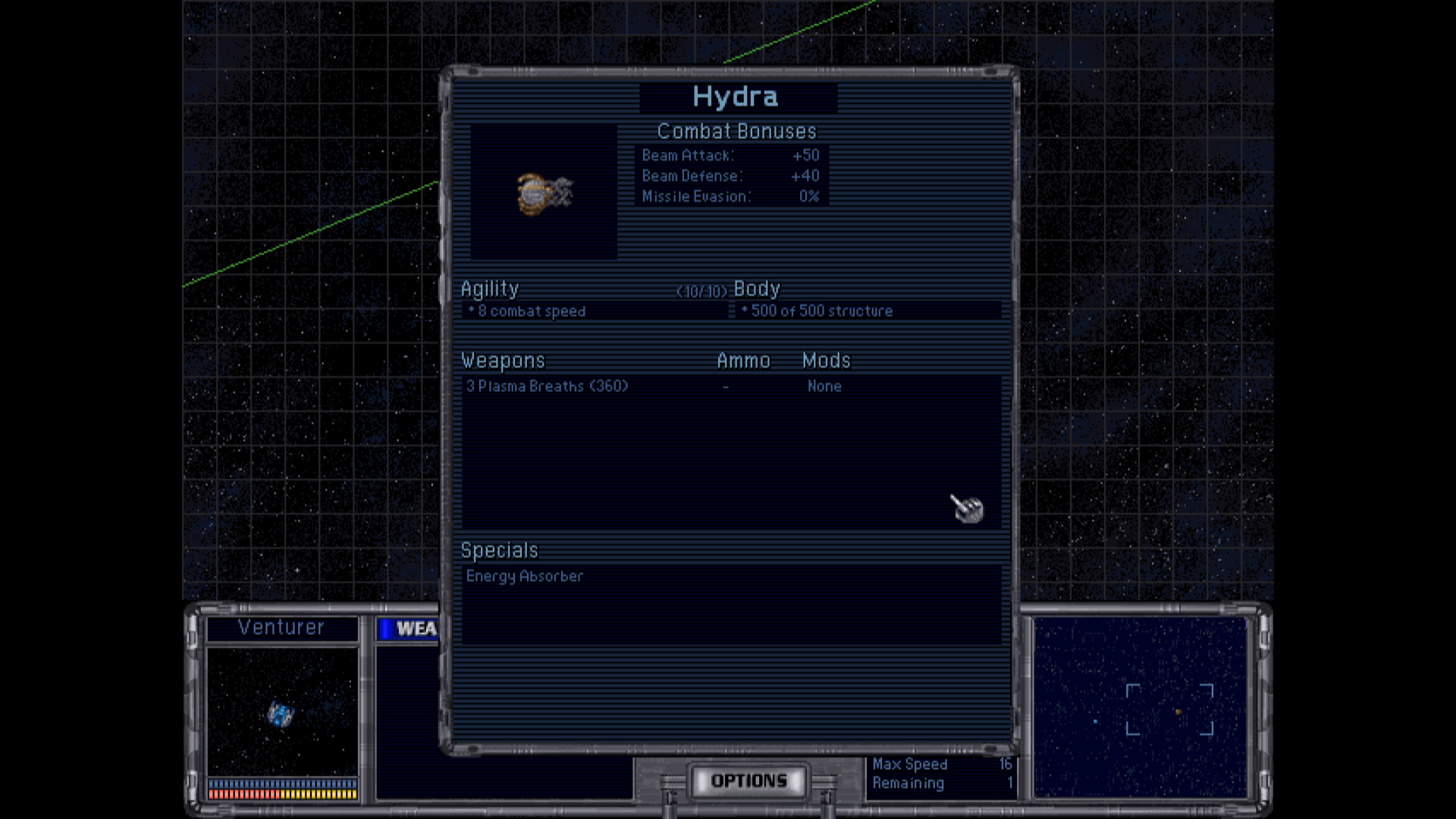 In 441, the Venturer arrived at the yellow star Ras, sweeping its sensors to survey the system. To its crew's shock and horror, along with the various bodies one might expect in a star system, they found a massive quasi-biological mass of tentacles, eyespots, and engulfing mouths with a core burning with temperatures like a stellar furnace which began to propel its way towards the exploration vessel. Frantic effort by the crew eventually allowed the ship to push itself back into hyperspace on an emergency course back to Tel before the terrible thing drew close enough to harm the Venturer. 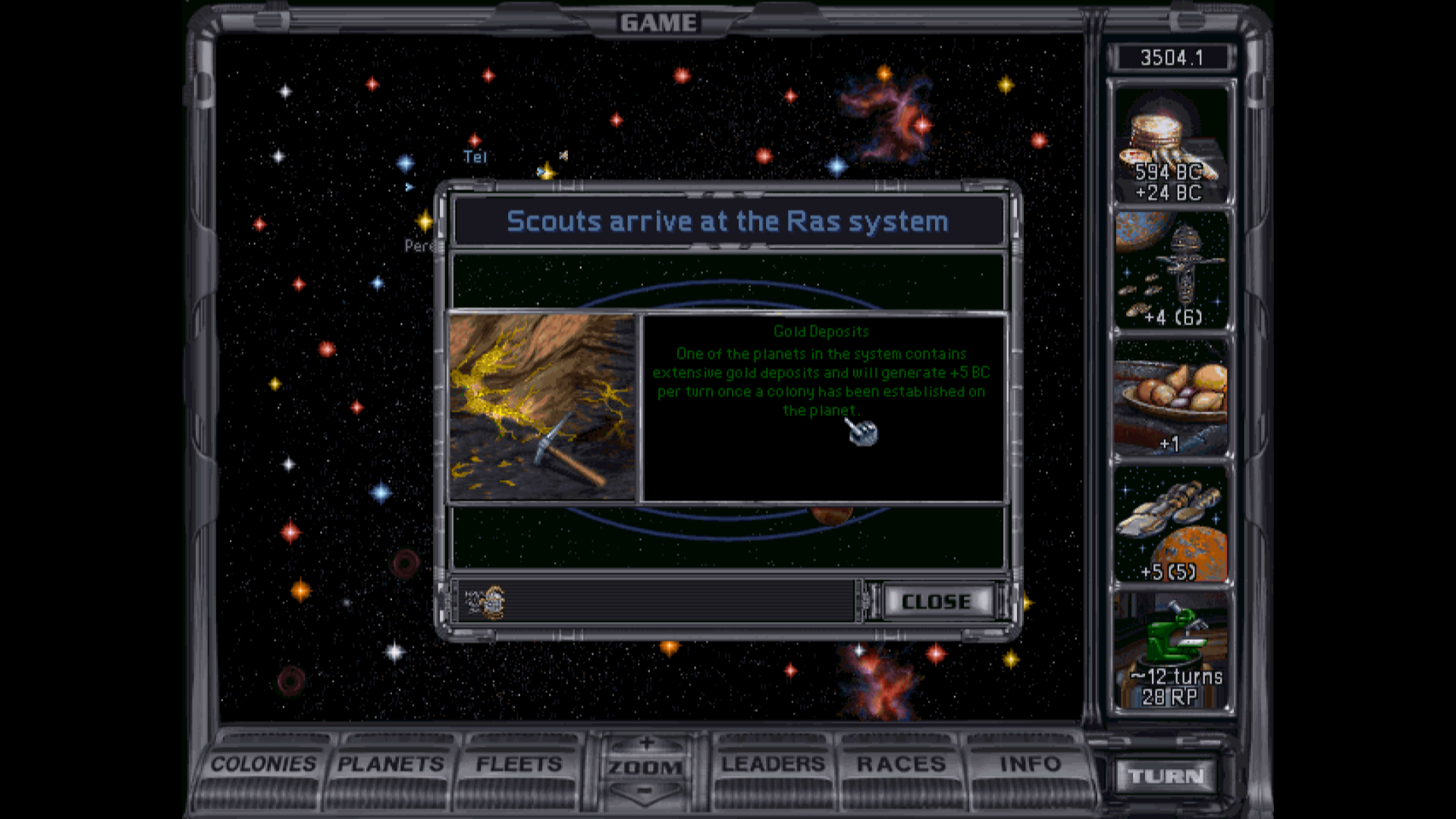  The planets orbiting Ras almost seemed to mock the explorers, as it was too dangerous to risk a return mission, yet what the Venturer had seen showed great promise. Ras I was an immense planet whose oceans and continents hosted an incredibly lush biosphere. Prevailing weather patterns that encouraged warm, mild conditions with heavy precipation over a very wide band of latitudes made for an extremely stable and friendly growing environment that provided large and stable supplies of food for local herbivores. The lush conditions for growth made deserts nearly unknown on Ras I, aside from those of the small polar ice caps. Despite its size and the rich deposits of heavy metals in the crust, the gravity on Ras I was anomalously low, hinting at strange secrets hidden on the planet. Meanwhile, Ras V was a planet approximately the size of Nares, thickly shrouded in choking clouds of sulfuric acid. As a planetary environment, it was brutally unforgiving, but large amounts of gold were present lacing the rocks of this Hellish world. The gold of Ras V might have proven a spur to greed, but the horrific planetary conditions were an equally daunting obstacle. The inner system between Ras I and Ras V was marked by a thick and broad asteroid belt and a gas giant unusually close to its system primary. Ras I is a huge, gaian, rich planet with low gravity; Ras V is a large, toxic, abundant planet with gold deposits. Low gravity gives a 25% output penalty on the planet, but the fertility and mineral richness on Ras I just might make up for that- assuming we could get through the space hydra. The 5 BC bonus income on Ras V is nice, but liable to get eaten into, eventually, by the 50% increase in maintenance costs on toxic worlds if we colonise it. 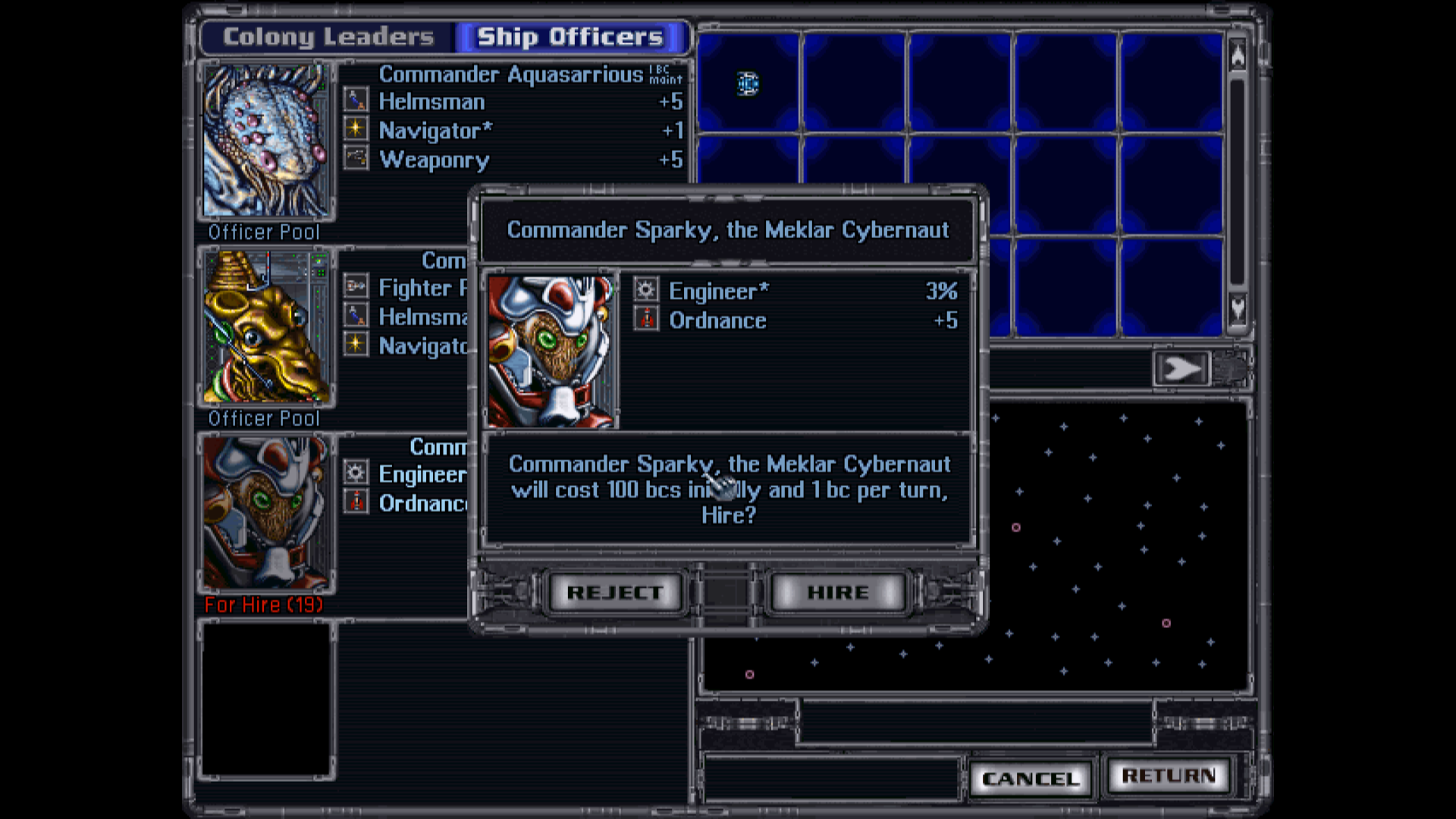 Continued development of engineering talent amongst major aerospace firms was only encouraged by experience and funding, and a series of radical techniques for design of repair equipment intended to help ships overhaul even major damage without need of a shipyard was eventually developed in 441. The expert pool of engineering talent in Narestan society would doubtless serve it in good stead in the future. 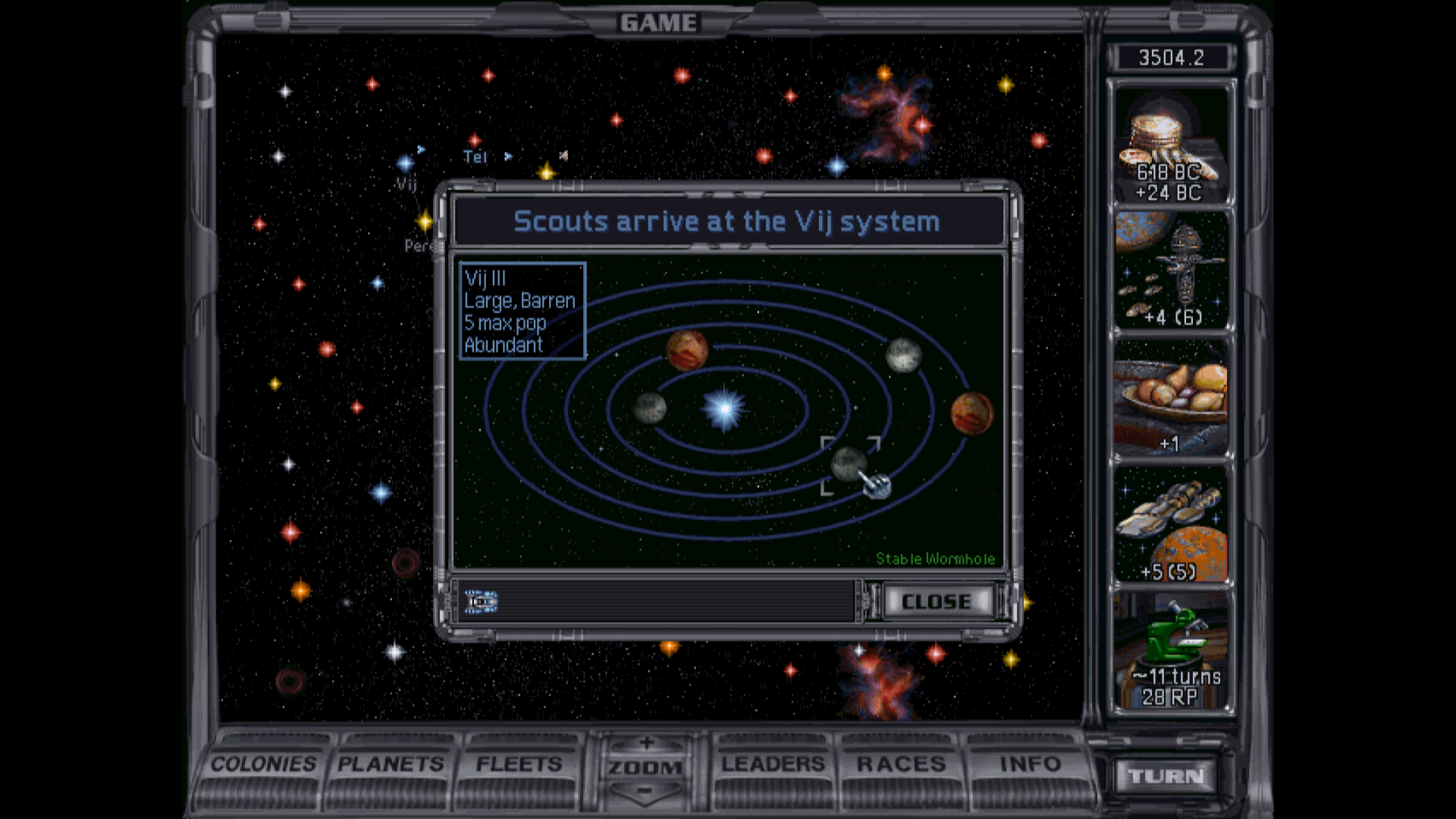 A year later, the Intrepid arrived at the hot blue-white star Vij. Two massive gas giants orbited in Vij's second and fifth orbits, still within its inner system. Meanwhile, three planets with thick, inert atmospheres orbited as the first, third, and fourth planets of the system, their atmospheres protecting them from the intense radiation output by the hot young star. Vij I was notably smaller than the other two, which were approximately the size of Nares, while Vij IV had unusually rich mineral and metals deposits along with crushingly heavy gravity that rendered it highly unattractive for colonisation. The most interesting thing about Vij, however, was evidence of a structural anomaly in hyperspace around the system providing a short, direct path to a red star on the opposite side of the galaxy. Vij I, III, and IV are all barren planets. Vij I is small and mineral abundant, Vij III is large and mineral abundant, and Vij IV is large, mineral rich, and suffers from heavy gravity (which more than offsets any additional production from the mineral richness, as well as penalising other outputs by 50%). The wormhole lets us travel between two stars in only one year.  With the prospects of a truly promising new world accessible to Narestan colonisation dwindling, the initial colonisation mission from Nares set out to Sedal, establishing a functional colonial population by 442. Although Sedal was a radiation-baked wasteland, nonetheless the initial expense of colonising it was much less than would be needed for an interstellar mission, and investment was ready to develop the new colony into a prosperous and productive community. A colony base only costs 200 production, compared to a colony ship's 500, and it began to become clear we weren't getting anything exciting nearby that made sense to hold out for, so I made the call to buy out a colony base. 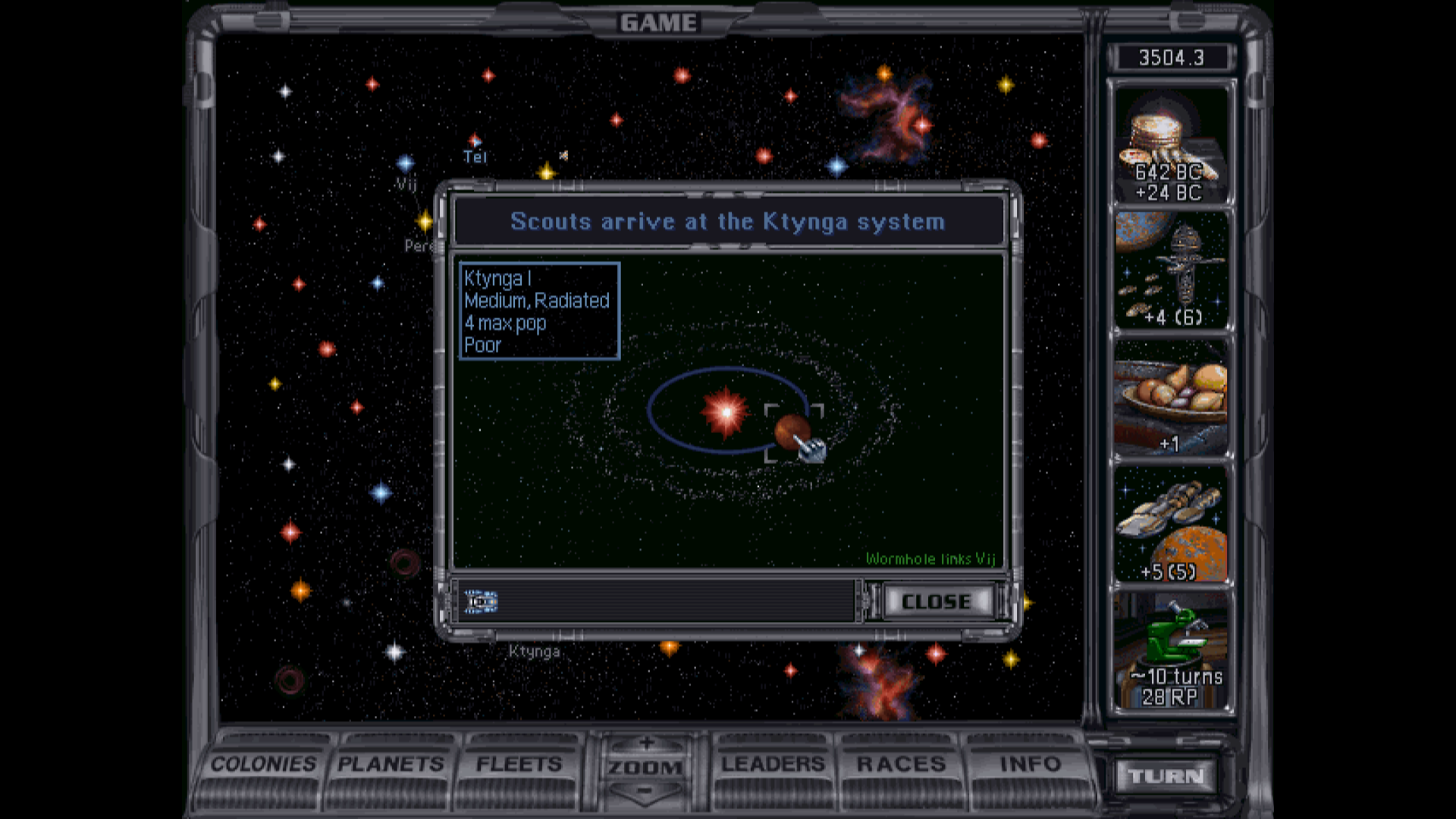  In 443, the Intrepid arrived at the opposite side of the strange path linking Vij and Kytynga, while in 446, the Venturer arrived at the red star Kelev near Tel. Both had close-orbiting, metal-poor planets seared and baked by radiation, of relatively little interest. Kelev also had, further out, a bitterly cold planet with modest oxygen content in its windswept atmosphere and thick ice sheets covering most of its surface. Further exploration proved there was an extremely primitive ecology of hardy molds around the equatorial belt of Kelev II, which otherwise was mostly notable for a crust seemingly comprised mostly of light rocks and silicates with minimal industrial metal content and inconveniently low gravity. Kelev II is a small, tundra, ultra-poor, low-G world- not a very attractive prospect at all. It appears everything near Tel ranges from 'bad' to 'mediocre', except for the system guarded by the horrifying hydra. Eventually, the work of scientists and research departments on Nares and Sedal bore fruit with continued improvements in the engineering of spacegoing ships around the year 450. Improvements in machinery and restructuring of internal spaces could recover a very significant amount of usable space for vessels, at the cost of a significantly increased manufacturing cost. The development of high-quality spaceframes in the future would no doubt help with whatever challenges the Narestans met amidst the stars. The following decade passed largely uneventfully, although with growing investment dedicated to an attempt to improve the ease and efficiency of trade between Nares and Sedal, and with continuing efforts to assemble colonists for the bleak worlds of the stars surrounding Tel. Narestan Civilisation as of 460 YE 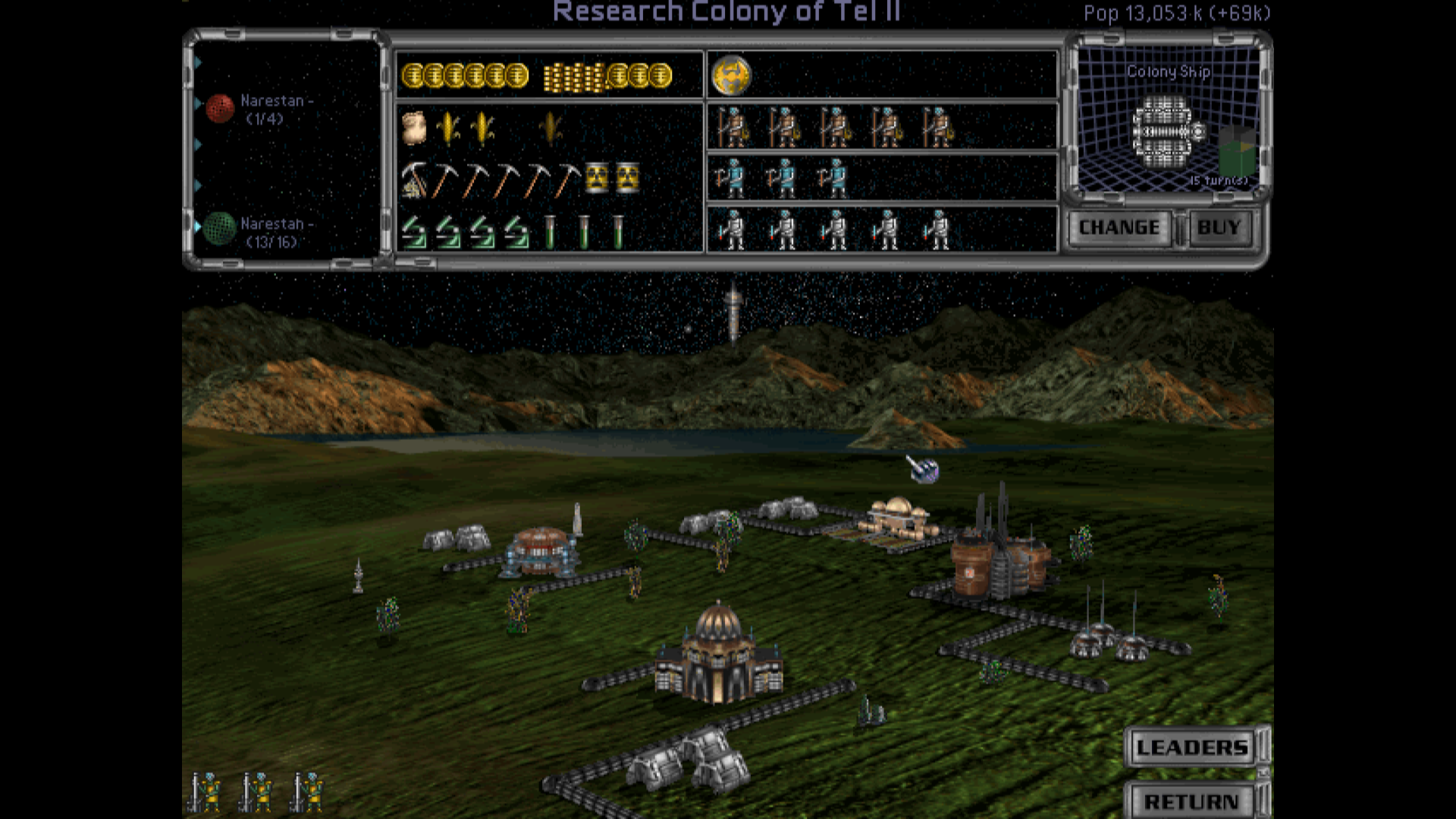 The population of Nares now stands at just over 13 billion persons and still growing, with the population employed in science, research, and development having increased from approximately 150 million to 250 million over the past twenty years. Food imports from Sedal currently make up approximately 8% of the food consumed on Nares, which has helped keep the size of the local agricultural sector steady. Nares remains prosperous, although the pull of new opportunities continues to attract colonists to a new colonial mission.  Sedal is now home to almost 1.7 billion persons, with an infrastructure which was rapidly moderised to match the standards of the homeworld. The relatively small population and the capital-intensive nature of its improved industries means that Sedal is critically dependent on imports from Nares to maintain its own infrastructure, importing large amounts of specialised equipment for its laboratories and its sealed industrial farms. The primary exports of Sedal, under current conditions, are food and a steady, if modest, flow of scientific data and engineering services under contract to firms back on Nares. Although the planet is well-developed, the difficulties of large-scale interplanetary trade, the smaller population, and the rather overstressed local infrastructure renders the availability of some products somewhat less reliable than on Nares itself, although it is hoped that eventually time will remedy these difficulties. Work has begun on a shipyard to orbit Sedal, although it is still a very long way from competion. Sedal's running a deficit of two BC, but it exports a unit of food and produces research. We can count that as a win for now.  Annual investment has continued to slowly climb over the past two decades, while innovation and invention have risen sharply. Regular freighter runs link Nares and Sedal, with a great deal of transport capacity still to spare. It is anticipated that continued efforts to improve the flow of trade between the two Narestan worlds shall soon bear fruit, and, despite the unexpected dangers to be found beyond Tel, the Narestan people are confident of ability to thrive as an interplanetary and even interstellar civilisation. Investment Proposals Sedal The construction of the shipyard over Sedal is an expensive proposition, while demand for specialty equipment and personnel for Sedal's laboratories and farms remains intense. The sale of industrial assets currently used for shipyard construction to local manufacturing firms on Sedal that focus on equipment to support local infrastructure and the supply of durable goods to the population may occur, leaving the shipyard half-finished until a later date, but much depends on the specifics of corporate negotiations and the anticipated value of the deal to everybody involved. Please vote on whether to temporarily divert Sedal to building trade goods until its population increases further. Review of Exploration Data on Physical Phenomena Going over the physical data collected by the Intrepid and Venturer could potentially allow for a more solid basis for the understanding of physics. Although no applications of particularly great value are anticipated from the project, it is also a relatively easy project that would require relatively little funding. Please vote on whether to grab Physics immediately after our current research project. Long-Term Research Continuing improvements in robotic equipment could have exciting applications in mining, industry, and construction, while advanced agricultural methods could have immediate and dramatic payoffs in the efficiency of Nares' agricultural sector, and both enjoy notable funding. Aerospace firms, meanwhile, continue to work on improving the ability of their drive systems to take advantage of the improved power output allowed by fusion reactors, while the metals industry has been continuing to experiment with the development of economical, durable alloys that could stand up to the harshest conditions and extend the lifespans of almost anything made of structural metals. Please vote on Robo-Miners, Soil Enrichment, Fusion Drive, or Tritanium Armor as our next major research priority. Colonisation Missions Although the planets beyond Tel accessible to Narestan exploration and colonisation are frankly not terribly exciting as a group, nonetheless there is still enough enthusiasm for the potential payoffs to drive continued colonisation efforts. The specifics of what planet may be most promising are still discussed by many, however. Please discuss and vote on what planet to colonise first, or whether we should start with an outpost. Please do not propose Vij IV, Kelev II, or anything in Ras as a colonisation target (due to 'heavy gravity', 'basically worthless', and 'we can't even do that yet', respectively), nor will I colonise Kytynga without first having a colony on Vij that can serve as logistical support for the effort. Nares' explorers are long since safely home, and its civilisation slowly gears up for the immense leap beyond its own star system. Hopefully Narestan prosperity will only continue to increase. nweismuller fucked around with this message at 02:24 on Mar 27, 2017 |
|
|
|
Build housing and go for Soil Enrichment Higher crop yields = fewer farmers = more population researching and building. Also what would you say the worst way to spend at least 10 race creation points would be? I am pretty sure trans-dimensional is at the top of that list.
|
|
|
|
Why would you ever build trade goods on an undeveloped world? No, build more housing instead. No need for physics just yet. Grab the Robo-Miners, soil enrichment would free up less people than they would if you aim to keep your production level the same but want to produce more research. I don't think you'll have the production to think about colonizing just yet, but Kelev is the least bad option right now. nweismuller posted:I am... not even sure what in the world you are talking about. Beginning writeup of the next update. You keep one unit of population on a planet with at least abundant minerals and all the production boosts you can cram in there, and have it build housing forever to get a growth rate of about 250k per turn. Whenever it grows to 2 pop, transport the extra pop to a more useful planet. (This is why I think that biospheres are more useful than hydroponics, by the way) habituallyred posted:Also what would you say the worst way to spend at least 10 race creation points would be? I am pretty sure trans-dimensional is at the top of that list. It's not that bad. It's surprisingly useful early on while your drive tech is still slower than molasses, a speed boost is also a defense boost, and I had a gimmick game where I planned my build around the "hyperspace flux" random event, and then ruthlessly exploited the fact that my fleet could move while the enemy fleets couldn't.
|
|
|
|
Man, seems like that other thread of yours stole all the exploration luck  But anyways, votes. No on Trade Goods, because I like infrastructure. Robo-miners because robots are cool and also most of the planets available to us are dead rocks. Vij because it seems the best of the non-optimal choices we have. Theantero fucked around with this message at 12:26 on Oct 5, 2016 |
|
|
|
I am not precisely sure how 'large, radiated, mineral poor' is better than 'large, barren, mineral abundant', frankly. Also, I'm not going to be building Housing here- keeping the population growth at its natural rate is a thing I'm going to be doing in this game.
|
|
|
|
nweismuller posted:I am not precisely sure how 'large, radiated, mineral poor' is better than 'large, barren, mineral abundant', frankly. Also, I'm not going to be building Housing here- keeping the population growth at its natural rate is a thing I'm going to be doing in this game. Noted. Edited my vote on regards the trade goods question and the colonization target.
|
|
|
|
No, physics, robomining. For colonizing, how crappy is too crappy? Do we have the luxury of having high standards? AJ_Impy fucked around with this message at 07:45 on Oct 7, 2016 |
|
|
|
Guysss Nweis has clearly stated that he won't be making Housing so stop voting for Housing.
|
|
|
|
I'm going to be out for the weekend. It'd be nice if I got more valid votes on the Sedal production thing than just Theantero's. I'll probably be ready to handle the update when I get back, but should be able to check the forums in the interim.
|
|
|
|
Theantero posted:No on Trade Goods, because I like infrastructure. This thing right here
|
|
|
|
Theantero posted:No on Trade Goods, because I like infrastructure.
|
|
|
|
No to switching to Trade goods. People will grow naturally. We need infrastructure first. Research Physics now. It shouldn't take long. Without physics we might as well be throwing rocks into the air to try and launch them into space. Robo Miners as lifeless planets will benefit from the additional research. Vij is our best bet to have a outpost outside our own system at this time.
|
|
|
|
Forgot to vote on Physics, so here's my vote to say Yes, do grab Physics.
|
|
|
|
Trade and Traffic Continued work by shipping, transport, and engineering corporations paid off by 464 YE, when major spaceport facilities were designed and constructed on both Nares and Sedal. The expense of shifting cargo mass to orbit was greatly reduced by the construction of major cargo mass drivers built into the surface of the planet, capable of launching cargo containers into orbit without the need for the containers carrying fuel of their own and thereby escaping the tyranny of the rocket equations. Orbital spaceport stations with populations equivalent to small cities collected cargo containers with their own lighter fleets, maintained local fuel manufacturing industries, and served as the warehousing and transfer points for traffic between worlds. Cargo containers to be dropped to planetary surfaces were fitted with basic automated landing thrusters and guided to splash down near surface spaceport facilities. Although there was still a need for orbital shuttles to bring passengers or living cargoes up into orbit or down to planetary surfaces, this nonetheless proved to be an immense improvement in the efficiency of shipping and led to an immediate boom in trade. 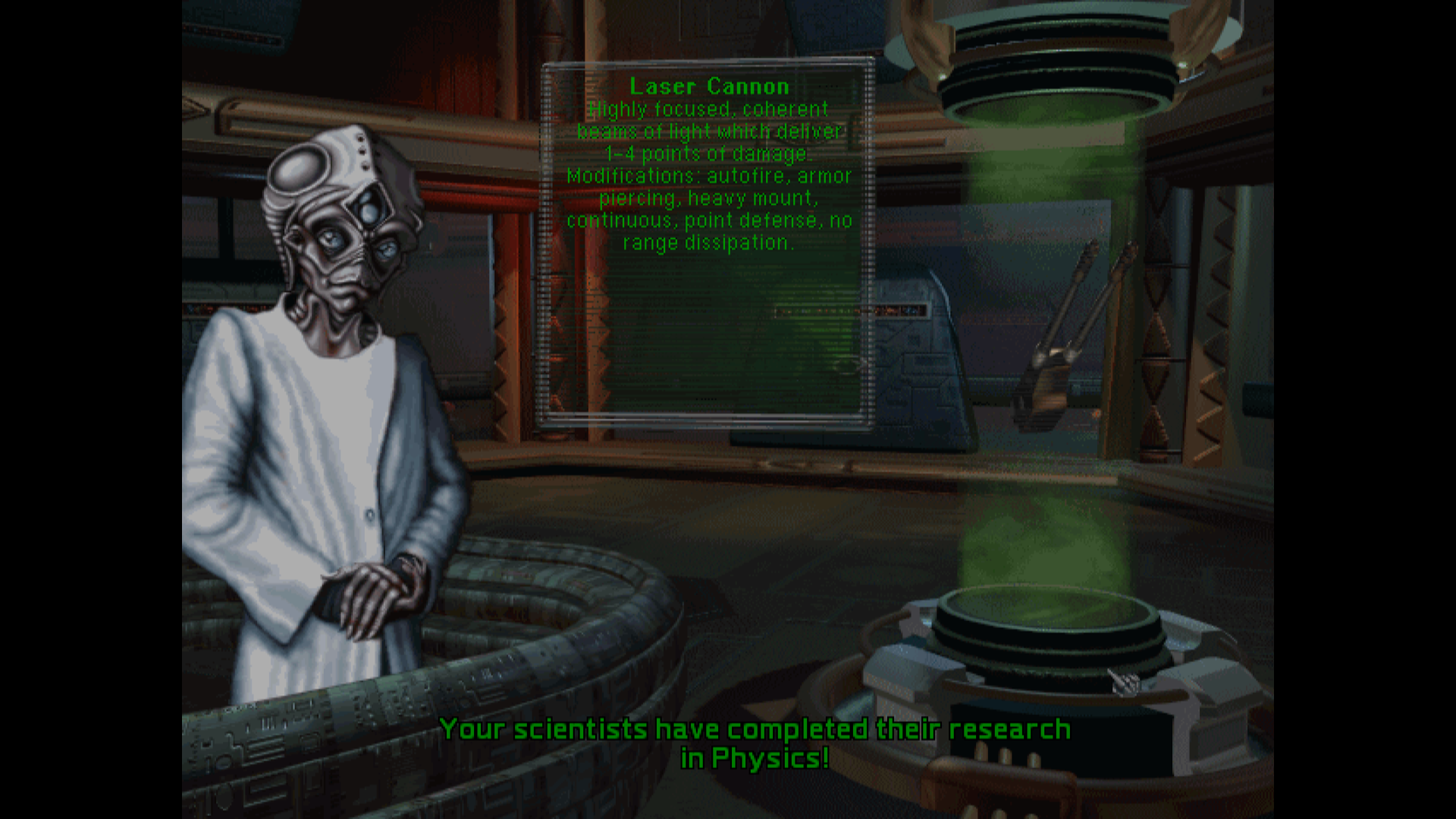 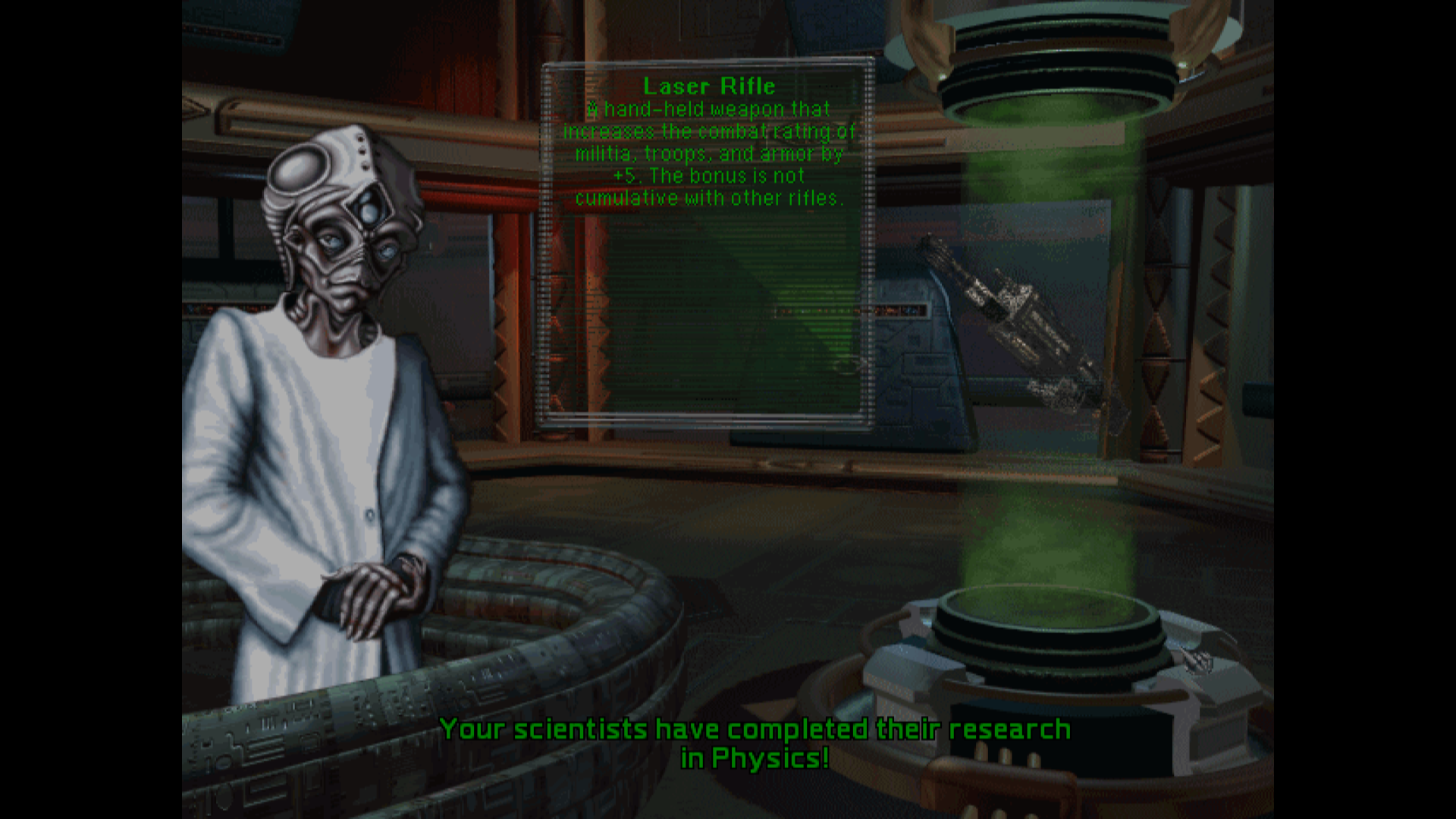 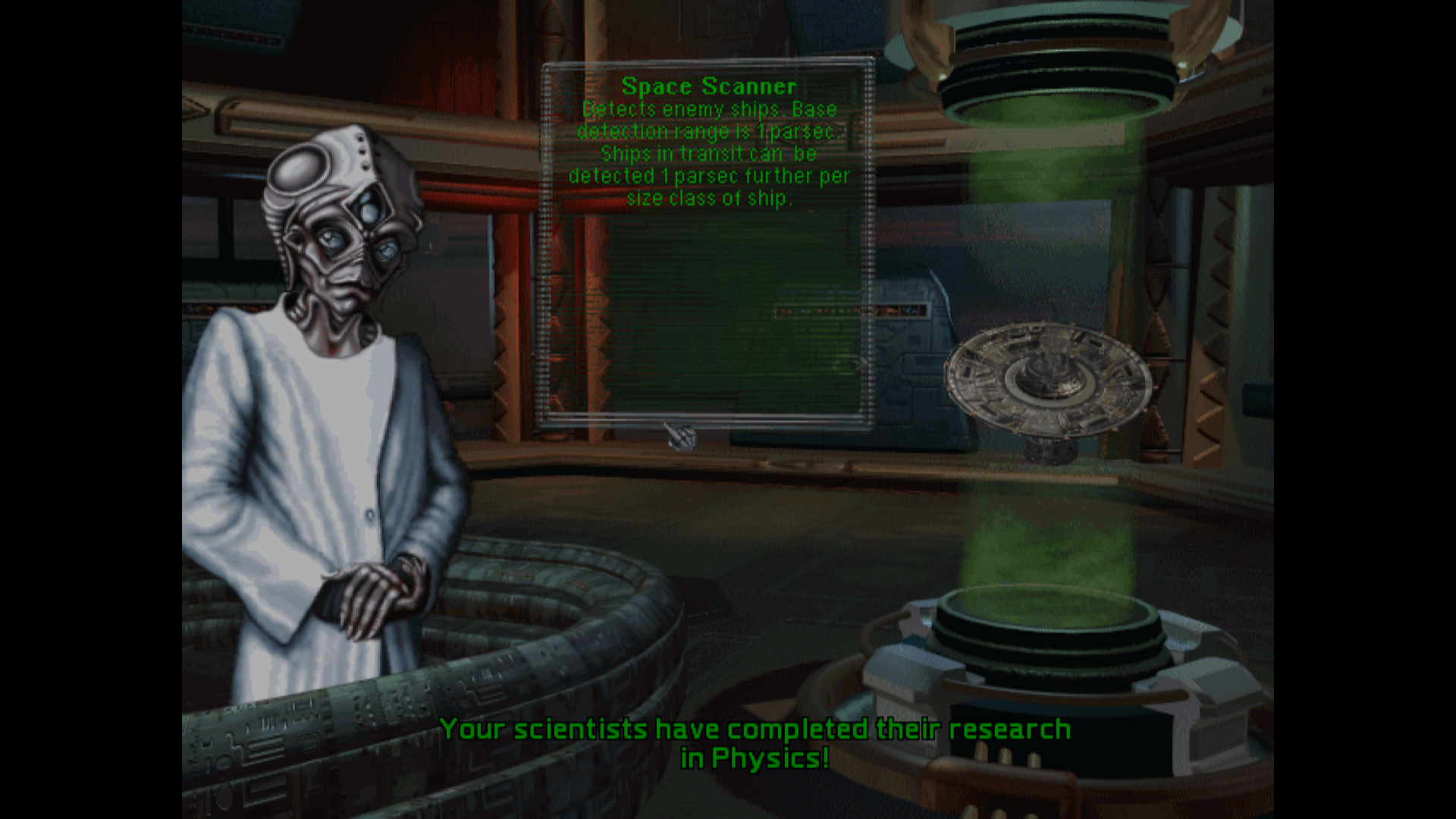 Two years later, review of the scientific data recovered by the Intrepid and Venturer led to a number of breakthroughs in basic physics. Although lasers had been known as a technology for many years, a firmer grasp on the underlying principles allowed for the development of compact, reliable, and efficient solid-state laser emitters that could serve effectively as weapons on any scale from hand-held personal weapons to starship weapons. Development of high-capacity single-use batteries even allowed the deployment of effective void-to-void lasers on high-performance small craft without a reactor of their own to power a ship-scale laser. Meanwhile, analysis of the faint traces in realspace left by travel in hyperspace let standard sensor arrays be tuned to sweep for evidence of FTL travel. Sedan Insurance, the insurance provider for the shipyard orbiting over Nares, insisted at this point that the shipyard's owners either mount defensive weapons arrays against the risk of future piracy or suffer an increase in premiums. The shipyard consortium, in response, modified their original design to accept a number of launchers for nuclear shipkiller missiles- each nearly as large, in their own right, as a manned small craft, in order to produce the immense acceleration needed for their role- and an array of laser cannon. Star Bases are armed, and now that we have all the basic weapons technology needed to arm one, I present it as doing so. Meanwhile, massive investment had completed the colony mission that was to embark to the Vij system. Three years later, in 469 YE, the colony on the newly-named planet Sadesal would be established. With Sadesal now home to a Narestan population, the slow progress of a circle of trade between Vij and Tel became a reality. Our high income means we can afford to rush-buy things earlier than might be expected. 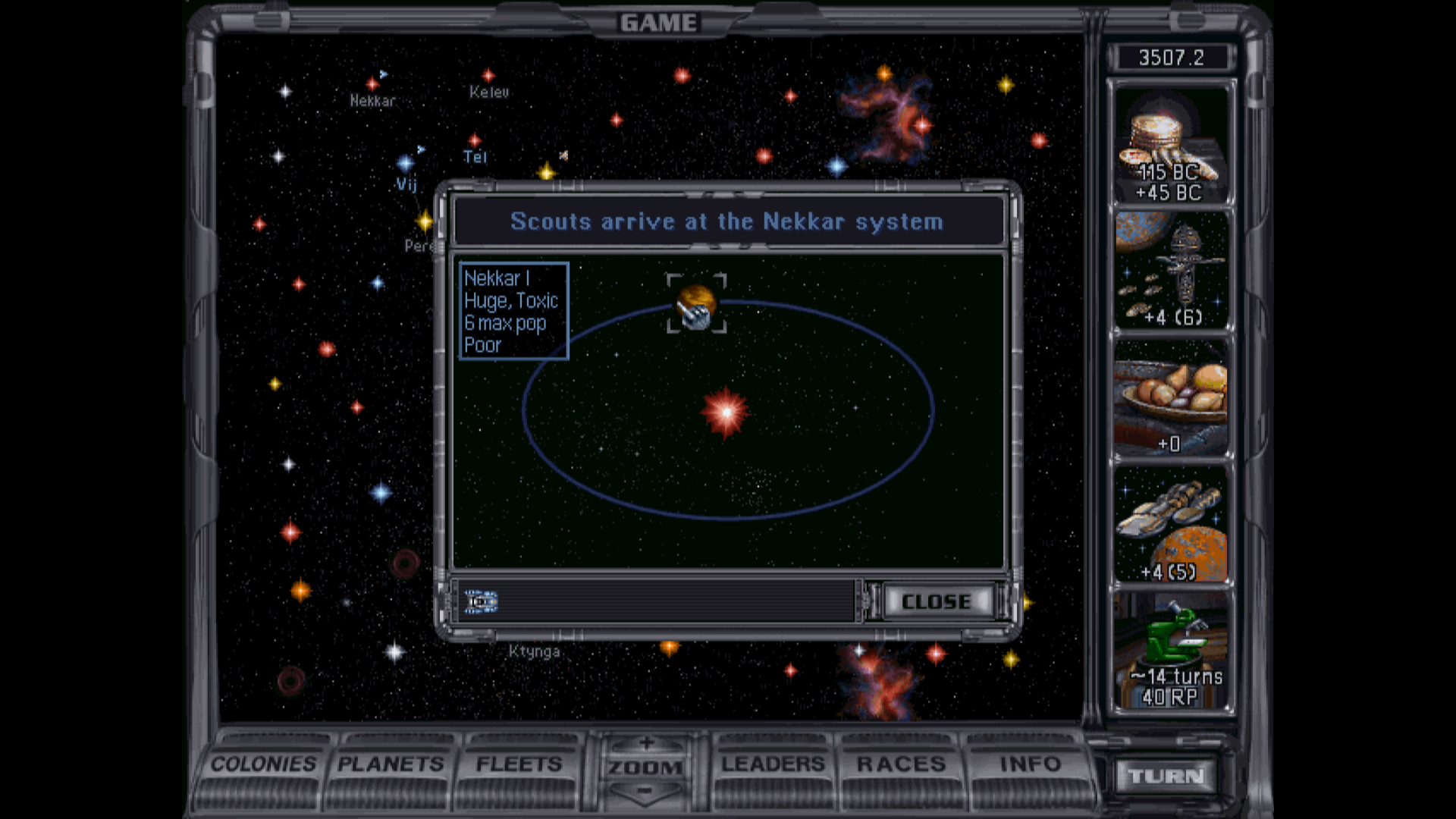 Three years following that colonisation, the red star Nekkar was explored by the Intrepid. In the inner system was only one body of particular note- a massive planet with concentrated acidic seas covering much of the surface and an atmosphere of highly corrosive vapors. Unfortunately, despite the planet's size, it seems a poor candidate for future colonisation. 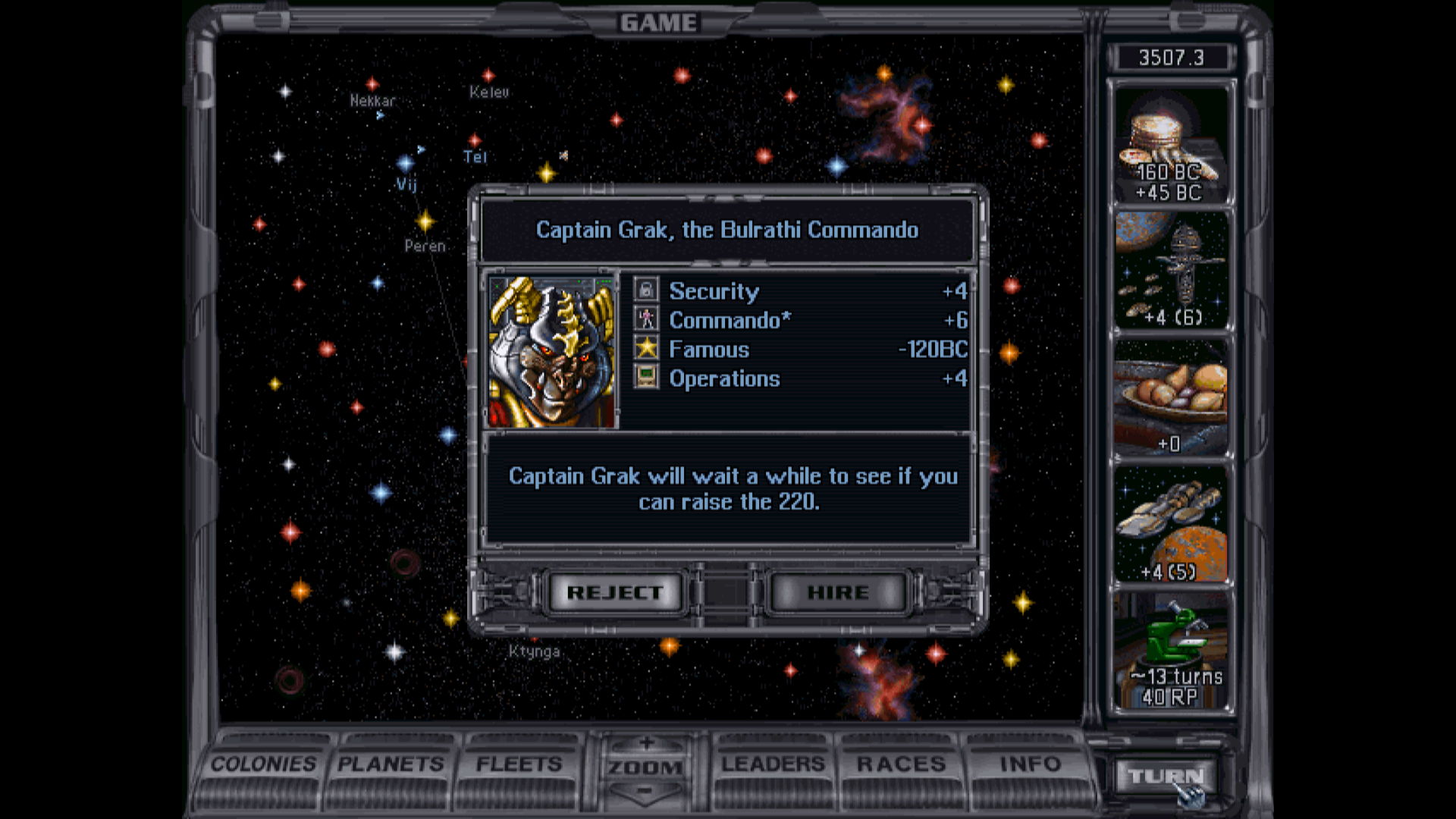 Discussion of the security challenges facing a FTL civilisation and hypothetical analysis of threat response tactics began to be a serious topic amongst security firms. Attention to interstellar command and control and logistics, if properly prepared for, might help allow for more efficient space security, while intensive training in established surface tactics and educational programs for promising security officers might help in future security actions and the cultivation of new talent. Our expert commando leader will help discount future leaders (and existing leader upkeep costs), help us support more ships through the Operations ability, and helps make surface and boarding combat much more effective. Development of Narestan planets and preparation for future colonisation continued steadily over the following years, slowly cementing the Narestan place amongst the stars. Narestan Civilisation as of 480 YE  Nares now has nearly 14.4 persons in population, with population growth slowing as the cities continue to grow larger on the planet's surface. The ease of trade with other planets that its spaceport facilities has engendered has helped drive a massive increase in specialisation of industry on Nares, with the corresponding increase in productivity and local incomes. Colonists and investors for another interstellar colony mission are being gathered, with Narestan ambition eager to find what opportunity can be forced from the worlds within range. 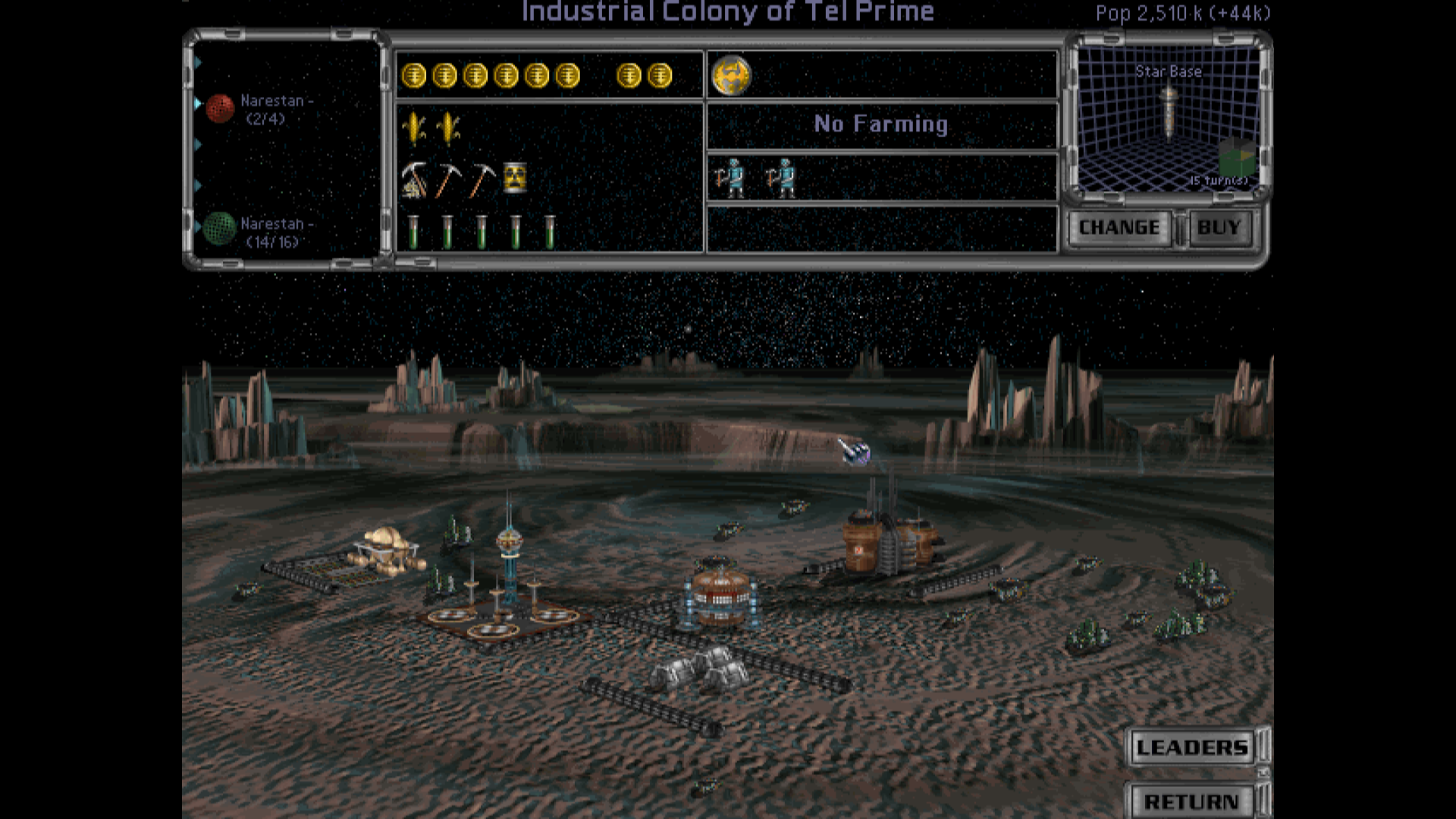 The growth of the local population, now over two and a half billion, coupled with growth in interplanetary trade has seen a massive leap in the the sophistication of Sedal's economy. Although its previous agricultural exports are a thing of the past, Sedal could continue to survive as a self-sufficient colony maintaining all its current infrastructure, while still benefiting from trade and specialisation between planets. Work continues steadily on an orbital shipyard over Sedal. 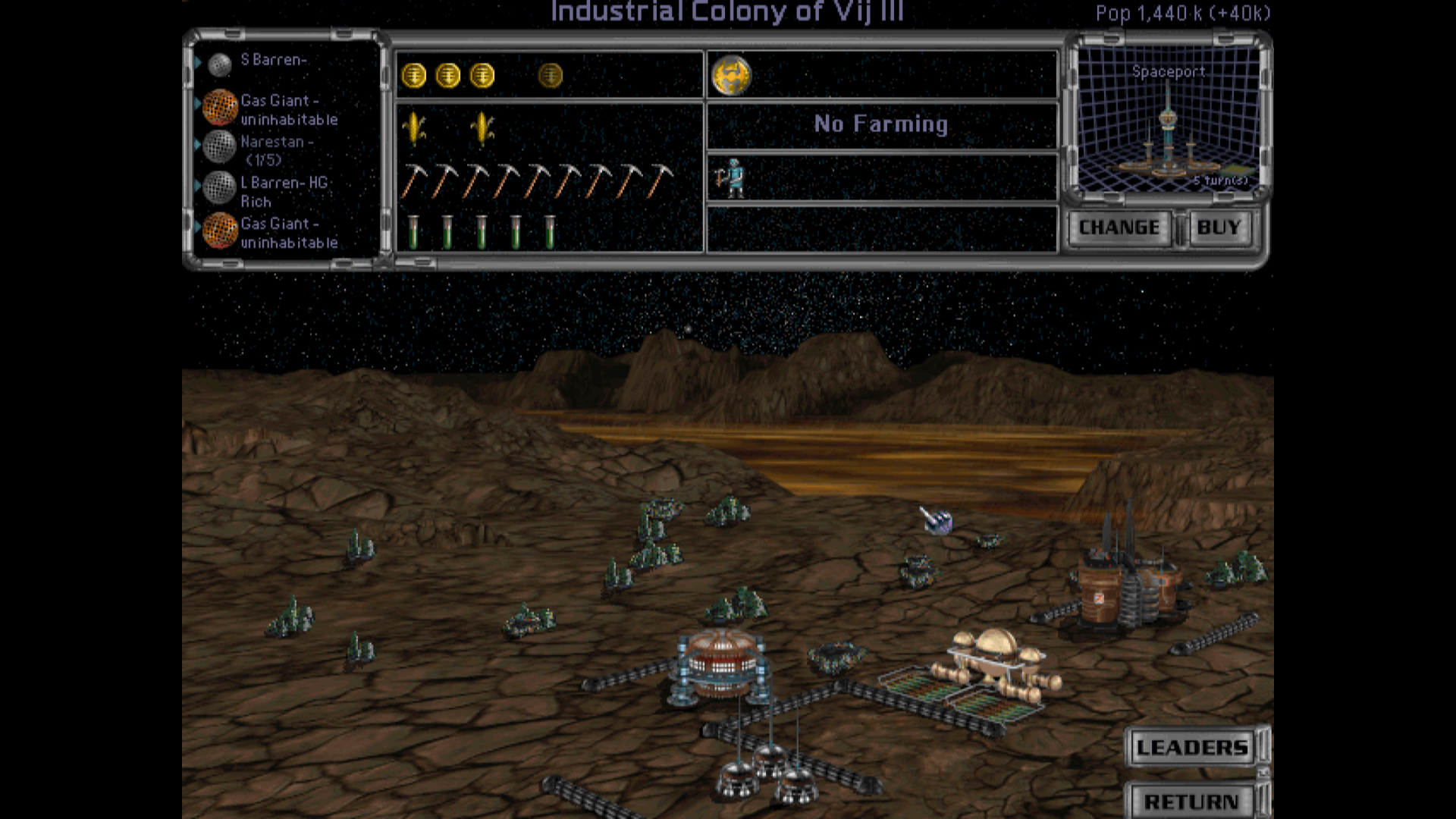 Sadesal, like Sedal before it, is a planet dependent on specialised imports from richer, more developed worlds to help support its rapidly-assembled infrastructure. Also like Sedal, it has relied on exports of agricultural produce from its sealed industrial farms and the export of basic scientific data and some high-tech components to finance needed imports. Construction of its own spaceport complex is under way on Sadesal.  The past decades have seen a major surge in the rate of accumulation of investment capital, driven in large part by the growing network of Narestan trade. Innovation has increased slightly, primarily driven by the small scientific and technical community on Sadesal. Narestan civilisation now is a genuinely interstellar civilisation, although the stars beyond Tel remain fairly short of promise. Even so, the Narestans hardly intend to let this stop them creating a grander and richer civilisation amongst the stars. Investment Proposals Security Firm Organisation Investment in security firms to help enable the implementation of the set of ideas discussed in the security community could have a number of long-run benefits, even if Narestan civilisation remains at peace as things stand. Please vote on whether or not to hire our new expert commando leader. Research Priorities Development of advanced industrial robotics is well under way; other R&D funding has been flowing to biological and agricultural sciences, the development of improved drive systems, improved materials science, and the development of a formal theory of space warfare by security firms. Please vote between Soil Enrichment, Fusion Drive, Tritanium Armor, or Space Academy for our next technology following Robo-Miners. Colonisation Priorities Peren Prime and Kelev Prime appear to be the least unpromising planets for colonisation in the immediate region, although which to prioritise first is still in discussion by mission planners. Please vote between Peren and Kelev for our next colonisation target. The steady improvement of Narestan prosperity has continued for the past two decades, with even greater breakthroughs to come soon. The Narestan people remain alone on the galactic stage, curious as to whether any other societies are there to be found amongst the stars.
|
|
|
|
Fame also helps attract better, more experienced leaders. Hire the leader ASAP ABSOLUTELY GRAB SOIL ENRICHMENT I actually prefer augmented engines to fusion drive, it's surprisingly useful in battle since it's not just a speed boost but also a defense boost. I absolutely understand not wanting to have lovely strategic mobility for a long time, though. Ugh. Kelev, I guess? With 2 production-boosting structures, we can make up for low mineral deposits, but without biospheres, we can't make up for lack of space in the other system. my dad fucked around with this message at 02:32 on Oct 11, 2016 |
|
|
|
my dad posted:Fame also helps attract better, more experienced leaders. Hire the leader ASAP Yeah do this thing
|
|
|
|
Since all our colonization options have garbage ecologies, we're going to need to do all our farming on the homeworld. Soil Enrichment will help us not need to spend quite so many pop on farmers. Kelev I guess? It sucks getting low mineral planets going, but the higher capacity will help in the long run, and on a freshly-colonize low-population planet most of the production comes from the flat bonus from the structures anyway.
|
|
|
|
Soil Enrichment. that lets us have one planet we can dedicate to agriculture as needed so other planets can focus on production. So long as there are enough freighters to handle supply we're good. Abstain on where to colonize.
|
|
|
|
my dad posted:Fame also helps attract better, more experienced leaders. Hire the leader ASAP The conviction in this post has convinced me. I agree with the plan.
|
|
|
|
Shipkillers, Laser Cannon, and Attack Boats- the Basic Theory of Void Combat Theorists of void combat in this interstellar era note three basic technologies available for assembling forces capable of engaging enemies and pirates in space. The shipkiller missile and laser cannon are each basic weapons systems capable of engaging targets at spaceborne velocities and ranges, while the attack boat, a security variant of high-performance civilian small craft, is, in many ways, a hybrid of both these basic technologies. The shipkiller missile consists primarily of a very large propulsion unit, fitted with high-power attitude thrusters, a basic sensor and seeker package to home in on its target, and a high-powered nuclear warhead. Once in close proximity to its target, rather than risking overshoot by an attempt at a contact intercept, the warhead will detonate, searing its target with the intense wave of photons created by the nuclear event. Over 50% of the warhead energy is lost uselessly to all sides, but nonetheless nuclear shipkiller missiles are anticipated to deal severe damage to any target. The relatively limited guidance package on shipkillers means that initial launch requires a turret for a launch tube, oriented to roughly capture its target in its sight window, and the high output of the propulsion unit requires a magnetically-assisted launch before the shipkiller touches off its primary drive, lest the missile destroy itself via propulsion backblast before it ever reaches its target. All this means that the required supporting machinery for a shipkiller launch tube is significant. Laser cannon capable of engaging at the distances of space combat are high-output solid-state arrays that need the formidable input energy available from a starship fission or fusion reactor, unlike lower-output land vehicle laser weaponry, which draws power from conventional engines. Laser cannon deal modest damage, but should be capable of effective engagement of hostile shipkillers or attack boats, giving them a vital defensive role. The conversion of power into coherent light in lasers remains a very low-efficiency process, with huge amounts of heat being produced by ship-mounted laser cannon. In order to deal with this heat buildup, each laser cannon has its own radiative heatsink array installed on the hull surface surrounding the laser cannon, helping mitigate this issue before its electronics fail and the internal temperature of the ship rises to untenable levels. Attack boats, for their part, have a propulsion unit very similar to that of a shipkiller missile, with a frame wrapped around this mounting its own sensors package, command compartment, weapons system, and even heavier manuever thrusters. The command compartment is either a lightly-armored crew compartment with a cushioned seat for the pilot, flooded with an oxygenated breathing medium as close to the density of the Narestan body as possible in order to minimise damage from G-forces, or a sophisticated package of computer equipment, transmitters, and recievers allowing remote drone piloting of the attack boat by an operator on its host vessel. The weapons system for an attack boat is a light laser mount, which has overcome the challenges of power delivery for lasers in a void environment by use of specially-designed high-density batteries that effectively slag themselves with each shot, thus serving as 'ammunition' for the weapon. Although each attack boat is somewhat larger and more complex than a shipkiller missile and requires support equipment for refueling, rearming, and maintenance, the displacement required for a four-boat squadron bay is only half again as much that of a shipkiller launch tube, its associated turret, and magazine space for five missiles. This is achievable in large part because the intelligent guidance of attack boats allows them to 'swim' out of their bay under maneuver thrusters, orient on a target, and light off their primary drives at a safe range. Attack boats are expected to be able to effectively make intercept with targets ranging from other attack boats and shipkiller missiles to hostile ships, and should be extremely effective as missile hunters due to their ability to engage at minimal range. In the event that an attack boat's target is neutralised, it can easily choose a new target to attempt intercept with. Attack boats are low-endurance weapons, with only four shots in their laser before they must return to their home vessel to refuel and rearm, which is done by making intercept with its home vessel and then 'swimming' back in to the squadron bay. The squadron bay, for its part, is kept permanently in vacuum with airlock access to the rest of the ship, with vacuum-suited support personnel to rapidly service the attack boat before it is launched once more. nweismuller fucked around with this message at 02:32 on Mar 27, 2017 |
|
|
|
Hope these lore posts are proving interesting to people. I enjoy writing them up.
|
|
|
|
I for one enjoy lore. Always fun to see more in-depth rationalizations for gameplay mechanics.
|
|
|
|

|
| # ? May 7, 2024 20:51 |
|
Hire the guy, enrich the soil, keep writing the lore.
|
|
|















